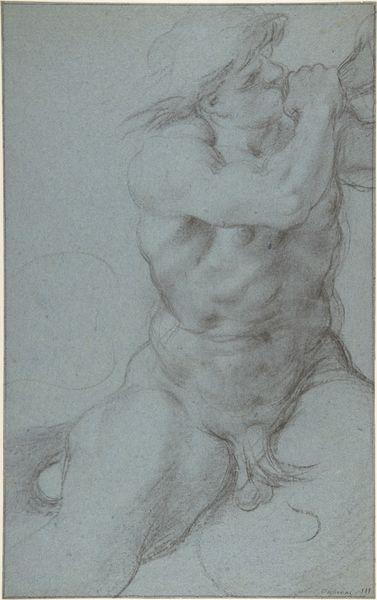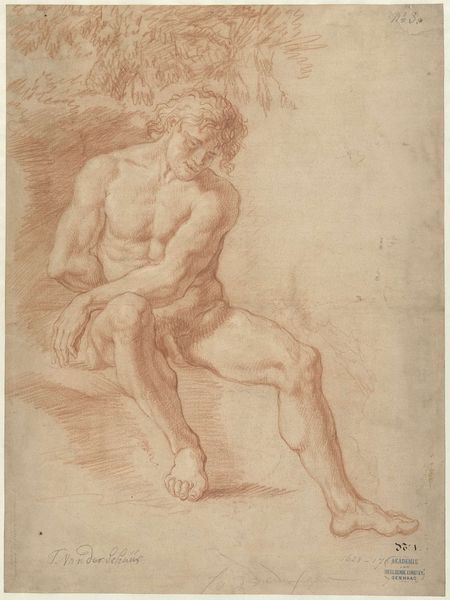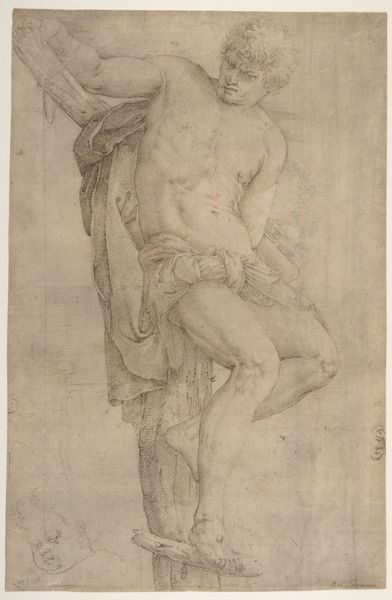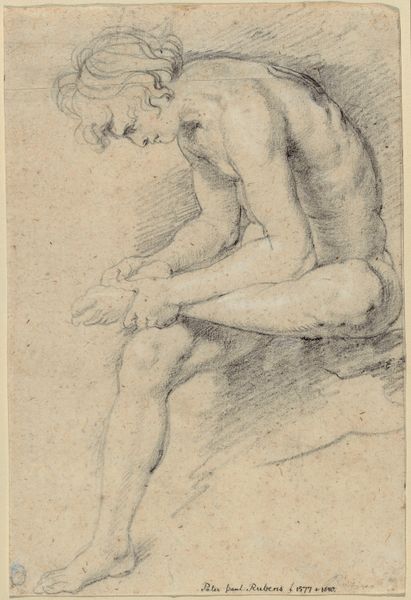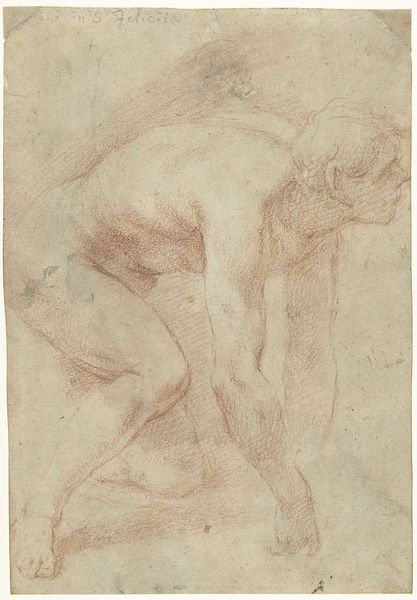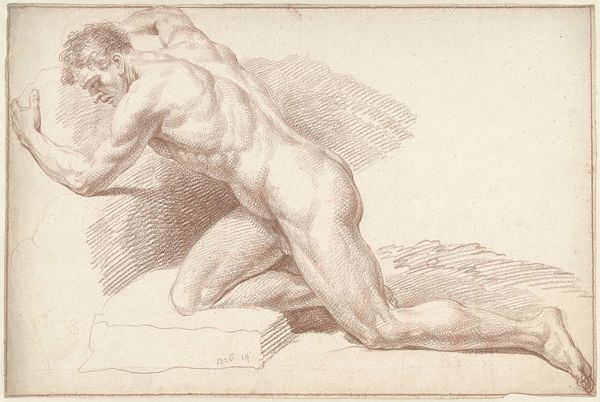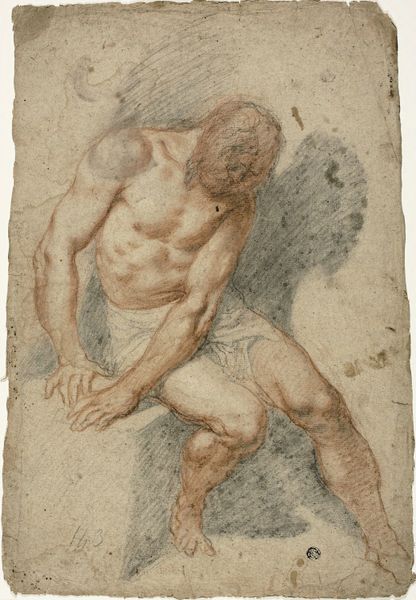
drawing, pencil
#
drawing
#
mannerism
#
figuration
#
11_renaissance
#
pencil
#
nude
Dimensions: overall: 30.2 x 21 cm (11 7/8 x 8 1/4 in.)
Copyright: National Gallery of Art: CC0 1.0
Curator: Here we have Alessandro Allori's "A Pearl Diver," a pencil drawing dating from around 1570, placing it squarely within the Mannerist period. Editor: He seems deeply lost in thought. There's a somber, almost burdened quality in the figure's pose, despite the clear emphasis on his physical strength. The medium really lends to this—the soft pencil shading is quite expressive. Curator: That contrast between physical strength and introspection is typical of Mannerist explorations of the human form. Allori was fascinated with depicting the human body in complex, often artificial poses to showcase skill and evoke emotional tension. Note the positioning of his hand against his face. Editor: Is this drawing a study, or a finished piece? Curator: It's widely considered a study, revealing Allori's meticulous approach. Mannerism favored idealized forms and graceful compositions, something Allori surely aimed at here, but note how his vision carries on earlier influences, such as Michelangelo. I believe it is possible he used the figure drawing of that artist, which are clearly referenced here, in terms of anatomical representation and, especially, the expressiveness. Editor: I can see that. There is the rippling musculature and also in the overall conception of this work. Pearl diving, you know, was an established economic activity. Are we perhaps romanticizing the physical cost, labor and hazards inherent? Curator: Precisely. The act of pearl diving becomes symbolic—a perilous descent into the depths in search of something rare and valuable, perhaps paralleling the inner search for knowledge or truth. Editor: It really adds layers. Thinking of it now, Allori captured an intersection of man, culture and social circumstances in a visually potent piece. Curator: Indeed. By considering Allori's world, as we appreciate his artwork and, by association, that specific, key moment of Renaissance sensibility. Editor: It is incredible to imagine and interpret such a period, thanks to those documents.
Comments
No comments
Be the first to comment and join the conversation on the ultimate creative platform.
